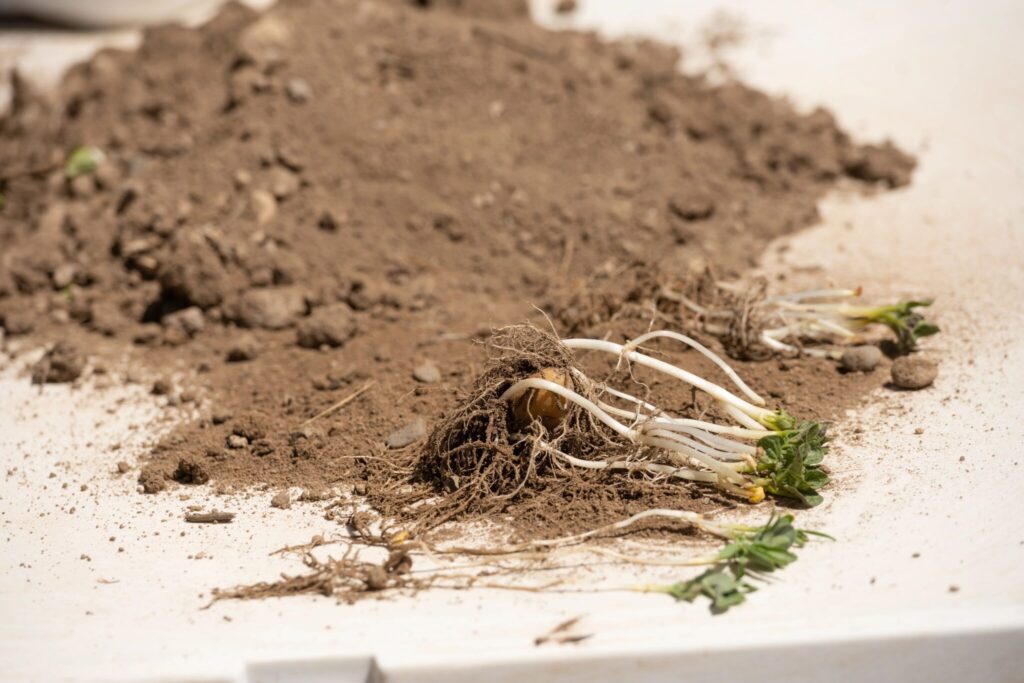
Researchers in the Colorado State University Department of Biology contributed to a new report that shows the amount of inorganic carbon in soil may be under-accounted for in global climate models.
CSU Research Scientist Anping Chen is a co-author for a report in Science that updates estimates of the amount of soil inorganic carbon around the globe. Soil carbon usually refers only to the organic matter component of soils, but there is also an inorganic component that tends to accumulate in arid regions with infertile soils. While the inorganic carbon is normally inactive – and thus thought to be less consequential in global modeling – the work explores how acidification through fertilizer use could activate it and lead to a release of up to 23 billion tons of carbon to the atmosphere over the next 30 years.
The research was done in partnership with the Chinese Academy of Sciences and Australia’s Commonwealth Scientific and Industrial Research Organization. We asked Chen about the findings in the international paper, how they relate to the larger discussion around climate change, and where the research goes from here.
Question: What is soil inorganic carbon? How does it relate to climate change?
Answer: Soil inorganic carbon is a solid carbonate that is formed from the natural weathering of rocks and stones across arid and semi-arid regions. It is a mineral-based carbon storage that plays a role in carbon dioxide sequestration and emission worldwide.
Soil can act both as a source and a sink of carbon dioxide. The balance between these roles depends on things like soil management practices, climate and the presence of vegetation. Natural erosion or land use by humans can cause the loss of soil inorganic carbon, often into inland waters. The fate of this lost carbon is complex due to many geochemical processes involved but could eventually lead to the release of carbon dioxide into the atmosphere. That may potentially exacerbate changes to our climate in terms of temperature or precipitation, which may in turn release more of the carbon stored in soils in an ever-growing cycle.
A lot of work has been done to characterize and quantify soil organic carbon, but it is increasingly clear that the soil inorganic carbon elements as discussed in this research are also important to understand in the broader context of climate change.
Q: How much soil inorganic carbon is there globally?
A: In this paper, we compiled a database of more than 200,000 soil measurements spanning around the world. My team contributed primarily to that process. The larger team then used machine learning and other techniques to estimate the soil inorganic carbon pool and found around 2,300 billion tons of it are stored in the top two meters of soil worldwide. That is nearly five times the carbon found in all the world’s vegetation combined and well above that of soil organic carbon, which has a median estimate of about 1,500 billion tons. That means there is a lot more carbon to account for in global modeling that is just under the top layer and could potentially be released through soil acidification in places like India or China that use a lot of fertilizer.
Q: How does this research fit with your work at Colorado State University?
A: A key theme of my research is the storage of carbon in ecosystems and the cycling of it between the land and the atmosphere. I am also interested in how those systems can shift over time due to natural and human related activity from things like climate change.
A lot of my previous research is on biomass carbon – or the carbon contained in living things. But recently, we have started looking into the carbon in soils. In 2022, we published a paper in Global Biogeochemical Cycles – a flagship journal of the American Geophysical Union – that shows how planting trees in places with no previous cover may influence soil inorganic carbon levels there. The data we collected is part of the global dataset analyzed in this Science paper.
Q: Where does this research go from here?
A: This paper provides a global overview of soil inorganic carbon and potential future changes. Next, we hope to develop methods to monitor and quantify changes over time – particularly for some regions that are rich in soil inorganic carbon while also hit hard by climate change and human activities, such as the American Southwest.